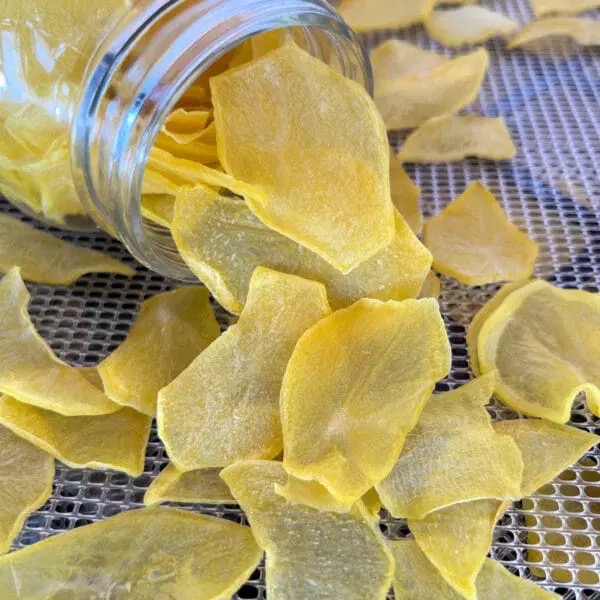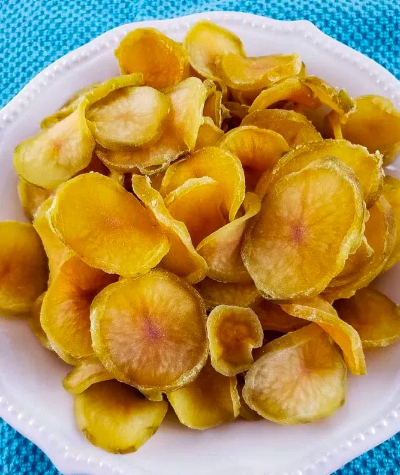
Content Menu
● Why Dehydrate Potatoes?
● What You Need
● Step-by-Step Guide to Dehydrate Potatoes
>> Step 1: Prepare the Potatoes
>> Step 2: Blanch the Potatoes
>> Step 3: Drain and Dry
>> Step 4: Arrange on Dehydrator Trays
>> Step 5: Set Your Dehydrator
>> Step 6: Cool and Store
● How To Rehydrate Dried Potatoes
● Uses for Dehydrated Potatoes
● Conditioning Your Dehydrated Potatoes
● Conclusion
● FAQ
>> 1. Can I dehydrate raw potatoes?
>> 2. How long do dehydrated potatoes last?
>> 3. How do I rehydrate dehydrated potatoes?
>> 4. What types of potatoes are best for dehydration?
>> 5. Can I use a microwave instead of a dehydrator?
● Citations:
Dehydrating potatoes is a fantastic way to preserve their flavor and nutrients while creating convenient storage options for long-term use. This article will guide you through the step-by-step process of dehydrating potatoes using a food dehydrator, ensuring that you achieve perfect results every time.

Why Dehydrate Potatoes?
Dehydrating potatoes may seem unusual, but it can be incredibly useful. By removing moisture from the potatoes, you create a shelf-stable product that can last for months. Dried potatoes are a fantastic pantry ingredient to have on hand, as they can be reconstituted and used in many different recipes, from soups and stews to casseroles and more.
Benefits of Dehydrating Potatoes:
- Long Shelf Life: Dehydrated potatoes can last for years when stored properly, making them an excellent addition to your food storage.
- Convenience: They are lightweight and easy to store, making them ideal for camping, hiking, or emergency preparedness.
- Versatility: Dehydrated potatoes can be rehydrated and used in various dishes, such as soups, stews, casseroles, or even mashed potatoes.
- Maximizes Harvest: Dehydrating helps to maximize your potato harvest and prevents food waste.
- Nutritional Preservation: Dehydrating preserves the nutritional benefits of the potatoes with less work than pressure-canned potatoes.
What You Need
Before you start dehydrating potatoes, gather the following items:
- Fresh potatoes (Yukon Gold or Russet are ideal)
- A sharp knife or mandoline
- A large pot for blanching
- An ice bath (a bowl filled with cold water and ice)
- A food dehydrator
- Airtight containers for storage
Step-by-Step Guide to Dehydrate Potatoes
Step 1: Prepare the Potatoes
1. Wash the Potatoes: Rinse the potatoes under cold water to remove any dirt or debris.
2. Peel (Optional): You can choose to peel the potatoes or leave the skin on, depending on your preference. If peeling, ensure you remove any blemishes or green spots.
3. Cut the Potatoes: Slice the potatoes into uniform pieces. Aim for thickness between 1/8 inch and 1/4 inch. Consistent sizing ensures even drying.
Step 2: Blanch the Potatoes
Blanching is a crucial step that helps maintain color and texture.
1. Boil Water: Fill a large pot with water and bring it to a boil.
2. Blanch the Slices: Add the potato slices to the boiling water and cook for about 4-6 minutes until they are fork-tender but not falling apart.
3. Ice Bath: Immediately transfer the blanched potatoes to an ice bath to stop the cooking process.
Step 3: Drain and Dry
1. Drain: After cooling in the ice bath for a minute, drain the potatoes thoroughly.
2. Pat Dry: Use a clean kitchen towel or paper towels to pat the potato slices dry, removing excess moisture.
Step 4: Arrange on Dehydrator Trays
1. Spread Evenly: Place the potato slices in a single layer on your dehydrator trays. Ensure they are not overlapping to allow proper airflow.
Step 5: Set Your Dehydrator
1. Temperature Setting: Set your food dehydrator to 125°F (52°C) to 135°F (57°C).
2. Drying Time: Dehydrate for approximately 8-12 hours, depending on thickness and moisture content of the potatoes.
Dehydrating Process
3. Check for Doneness: The potatoes are done when they are completely dry, crisp, and break easily when bent.
Step 6: Cool and Store
1. Cool Down: Allow the dehydrated potatoes to cool at room temperature for about 30 minutes.
2. Storage: Transfer them into airtight containers or vacuum-sealed bags. Store in a cool, dark place.
How To Rehydrate Dried Potatoes
Although dried potatoes can go directly into your favorite recipes without needing to be reconstituted first, it is highly recommended that you take extra time to rehydrate them in water before baking or cooking. Doing so will help bring back more of the original texture and flavor.
To rehydrate:
1. Combine equal parts of dried potatoes and water by volume (e.g., 1 cup dried potatoes + 1 cup water).
2. Soak in hot water for about 20-30 minutes until soft and pliable.
3. Drain off any excess water before using them in your desired recipe.
Uses for Dehydrated Potatoes
Dehydrated potatoes can be used in various recipes:
- Instant Mashed Potatoes: Simply rehydrate and mash with butter and milk.
- Potato Soup: Add dehydrated potato slices directly into simmering broth along with other vegetables for hearty soup.
- Casseroles: Mix rehydrated potatoes with other ingredients before baking for delicious casseroles.
- Scalloped Potatoes: Use dehydrated slices mixed with cream and cheese for a quick scalloped potato dish.
Conditioning Your Dehydrated Potatoes
After drying your potatoes, conditioning is important for safe storage:
1. Place dried potato slices into an airtight container.
2. Shake gently every day for about a week.
3. Check for signs of moisture; if present, return them to the dehydrator until fully dry again.
4. Store conditioned potatoes in a cool dark place once confirmed dry.
Conclusion
Dehydrating potatoes is an efficient way to preserve this staple food while providing you with versatile options for future meals. By following these steps carefully, you can ensure that your dehydrated potatoes retain their flavor and nutritional value while being ready for use whenever needed.

FAQ
1. Can I dehydrate raw potatoes?
No, raw potatoes should not be dehydrated as they will discolor and become unappetizing. Always blanch them first before dehydration.
2. How long do dehydrated potatoes last?
When stored properly in airtight containers in a cool, dark place, dehydrated potatoes can last up to two years.
3. How do I rehydrate dehydrated potatoes?
To rehydrate, soak desired amounts of potato slices in hot water for about 20-30 minutes until soft and pliable.
4. What types of potatoes are best for dehydration?
Yukon Gold and Russet potatoes are recommended due to their texture and moisture content.
5. Can I use a microwave instead of a dehydrator?
While it's possible to use a microwave with specific settings for drying foods, using a food dehydrator is more effective for achieving consistent results with dried vegetables like potatoes.
Citations:
[1] https://www.cravethegood.com/how-to-dehydrate-potatoes/
[2] https://www.gettystewart.com/dehydrating-potatoes/
[3] https://www.bdprovisions.com/recipes-blog/scalloped-potatoes-from-dehydrated-potatoes
[4] https://pmc.ncbi.nlm.nih.gov/articles/PMC7684612/
[5] https://www.youtube.com/watch?v=PpGAddrbT6A
[6] https://www.gettystewart.com/how-to-make-scalloped-potatoes-with-dehydrated-potatoes/
[7] https://www.webmd.com/diet/dehydrating-food-good-for-you
[8] https://bramblewinecottage.com/dehydrating-potatoes/
[9] https://www.foodstoragemoms.com/6-easy-ways-to-use-dehydrated-potatoes/
[10] https://potatogoodness.com/dehydrated-potatoes/










